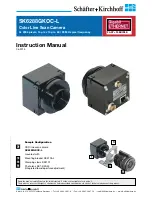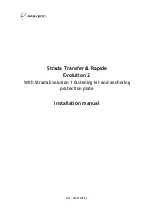
TruVision 6MP and 12MP 360° Camera Configuration Manual
21
Menu tabs
Description
10. QoS
QoS (Quality of Service) can help solve the network delay and network
congestion by configuring the priority of data sending.
Enable the option in order to solve network delay and network congestion
by configuring the priority of data sending.
See page 25 for setup information.
11. 802.1.X
When the feature is enabled, the camera data is secured and user
authentication is needed when connecting the camera to the network. See
page 25 for setup information.
12. Integration
protocol
If you need to access to the camera through the third party platform, you
can enable STD-CGI function. And if you need to access to the device
through ONVIF protocol, you can configure ONVIF user in this interface.
Refer to ONVIF standard for detailed configuration rules.
To define the TCP/IP parameters:
1. From the menu toolbar, click
Configuration
>
Network
>
TCP/IP
.
2. Configure the NIC settings, including the NIC Type, IPv4 settings, IPv6 settings,
MTU settings, and Multicast Address.
3. If the DHCP server is available, select
DHCP
.
4. If the DNS server settings are required for some applications (e.g., sending email),
you should configure the
Preferred DNS Server or Alternate DNS Server
.
5. Click
Save
to save changes.
To define the DDNS parameters:
1. From the menu toolbar, click
Configuration
>
Network
>
DDNS
.
2. Select
Enable DDNS
to enable this feature.
3. Select
DDNS Type
. There are three options are available: DynDNS, ezDDNS and
NO-IP.
•
DynDNS:
Enter the DNSS server address, members.ddns.org (which is used to
notify DDNS about changes to your IP address), the host name for your camera,
the port number (443 (HTTPS)), and your user name and password used to log
into your DDNS account. The domain name displayed under “Host Name” is that
which you created on the DynDNS web site.
•
ezDDNS
: Enter the host name. It will automatically register it online. You can
define a host name for the camera. Make sure you entered a valid DNS server in
the network settings and have the necessary ports forwarded in the router
(HTTP, Server port, RSTP port).
•
NO-IP:
Enter the address of the NO-IP, host name for your camera, the port
number, your user name and password.
4. Click
Save
to save changes.















































